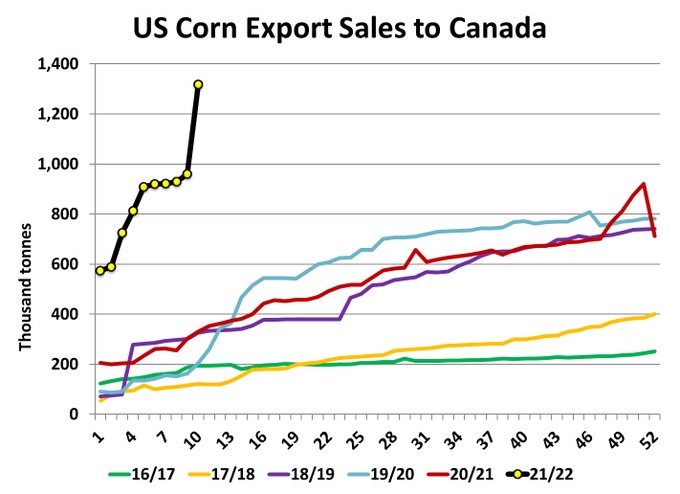"Right now, the U.S. reporting system is showing that just a couple of months into their marketing year they've already sold 1.36 million tons of corn, and last year at this same time it was about 325,000 tons," said Penner, "So we're several multiples of that higher."
That's just the first few months of corn sales to Canada, and Penner says that they're unlikely to slow down anytime soon.

"There was a big jump just in the last week where sales jumped by about 350,000 tons just in one single week, and we expect to see strong Canadian corn imports from the U.S. for the rest of the year," said Penner.
Those imports are being driven by a need to replace a popular feed item for livestock producers, barley.
"It's almost entirely driven by the drought that we had this year, Canadian barley production last year was about 107 million tons, this year it could be 6.5 - 6.7, so four million tons less than last year," said Penner, "A large part of that is having to feed our livestock in Western Canada and just to replace that shortfall we have to replace it with something."
Penner says we're likely to see even more corn come into Canada for the rest of the year.
"Typically we'll import a few hundred thousand tons, six to eight hundred thousand tons from the U.S. into Western Canada," said Penner, "This year it could be 2, 3 million tons just to replace the lost barley."
Penner also notes that despite predicting that barley prices would fall thanks to the influx of corn, the grain crop's price has remained high.
Click here to see more...